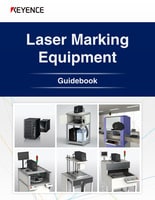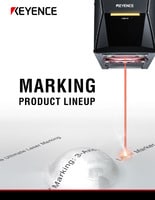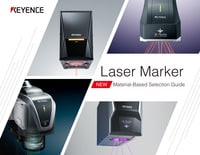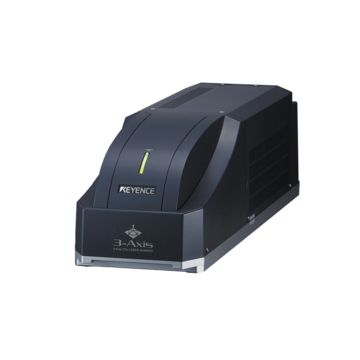Industrial Laser Marking Systems / Laser Markers
Guide to Understanding Laser Powers
-
Tags:
- Laser Engraving , Laser Cutting , Laser Ablation
Applications for laser technology are numerous and span many sectors, including automotive, medical, aerospace, etc. If you are new to laser applications, you might wonder which type of laser equipment will work best.
Naturally, you might look at the specifications and assume that more is automatically better. However, understanding the context of these specifications is of the utmost importance.
A prime aspect to look for while comparing lasers is laser power. What does a power of 100 watts mean? Is 30 Watts better than 25 Watts? For that, you need to know how laser power impacts laser marking and/or laser processing applications.
In the following, we’ll explore laser power fundamentals and how to optimize laser technology for precision and accuracy. This will help ensure you choose the right equipment for your needs.
Laser Powers in Industry-Specific Applications
Before we get into the details of laser power, we must recognize that laser powers vary significantly based on their intended use.
The laser power affects weld strength, cutting speed, marking contrast, engraving depth, heat-affected zone, etc.
For instance, a laser marker used for precise engraving on delicate materials may operate at a much lower power than one used for cutting thick metal sheets. Similarly, higher laser powers are typically required for welding thicker materials or achieving deeper weld penetration in the manufacturing industry.
Outside of laser welding and laser engraving applications in the manufacturing industry, laser power has significantly contributed to the medical and aerospace industries. In the medical industry for example, power is needed to get dark contrast for easily readable marks; however too much power can cause damage to the surface rendering it useless. In aerospace applications, higher power is often used for faster processing speeds or when applying thicker clad layers. This versatility and effectiveness of laser power make it a sought-after tool across sectors.
We’re here to provide you with more details.
Reach out today!

Key Laser Power Parameters
Laser parameters can be modified to decide how the power of a laser can be purposed. Here are a few parameters of laser power you should know.
Pulse Energy
The energy produced by a single laser pulse is referred to as pulse energy. If your specific application requires a UV laser marker with less energy, you can modify this parameter to attain the desired results. Consider a scenario where a UV system with a 355 nm wavelength, operating at just 2.5 Watts, outperforms a 50 W fiber laser at 1090 nm wavelength on various plastics. The shorter wavelength provides a faster mark and better quality, highlighting how pulse energy is not just about power.
Pulse Duration
Pulse duration, or pulse length, signifies the length of time the laser emits a pulse. If the pulse is shorter, it means the peak power is high. This parameter matters the most in applications where precise length timing is needed, such as laser surgery or spectroscopy.
Regardless of wattage, pulse duration can significantly impact the efficiency of the marking process. For example, a high-power laser marker with 100 W and a pulse duration of 10 ns has a less intense pulse than a 25 W marker with a shorter pulse duration of 5 ns. The shorter pulse allows for more precision and detail.
Pulse Repetition Rate
The pulse repetition rate indicates how frequently pulses are emitted per unit time. It is often expressed in kilohertz (kHz) or hertz (Hz). It's crucial in applications needing continuous processing, such as UV laser marking, cutting, or welding. You can use a high-power laser where more pulses per second are required. For example, a 100 W laser can release 100,000 pulses of 1 MJ per second. But one thing to be noted here is that if you need to increase pulses, you have to lower the pulse energy.
Spot Size
Laser energy can be distributed unevenly as laser beams can have different shapes. So, spot size refers to the diameter of the laser beam where its intensity is most focused. A smaller spot size means higher energy peaks, so if you are undergoing a process like laser etching and need to go deep into the material, a small spot size will work.
Although a larger spot size covers a bigger surface, it sacrifices detail and precision. For example, a 50 W laser marker with a 100 µm spot size will not achieve the same speed and accuracy as a 25 W marker with a smaller spot size of 50 µm.
Discover more about this product.
Click here to book your demo.

Choosing the Right Laser Pulse Energy - Continuous vs. Pulsed Laser Powers
One significant consideration when utilizing lasers is whether to use continuous or pulsed laser power. Both of these types use their available power differently.
Continuous Lasers
Continuous-wave lasers emit a continuous beam of light, providing a constant power output. For example, a 50 W continuous laser consistently releases 50 joules of energy per second. They are ideal for applications requiring steady energy delivery, such as laser cutting or welding thick materials.
Pulse Lasers
Pulsed lasers, on the other hand, deliver energy in pulses with brief pauses. These breaks allow the laser a chance to gather more energy before shooting out the next burst. Because of this, pulsed lasers can hit higher energy levels compared to continuous lasers.
We’re here to provide you with more details.
Reach out today!

Distinguishing - Average Power, Laser Peak Power, and Laser Power Density
To help understand the beam laser power, know the difference between average power, laser peak power, and power density. Let’s get through these concepts:
Average Power
Average power is commonly interchanged with laser power. It’s the total energy delivered by a laser in one second. A 100 W laser has an average power of 100 W, no matter whether it’s continuous or pulsed. Average power is essential for assessing the overall performance and energy consumption of a laser system.
Laser Peak Power
Laser peak power is the highest laser power output that the laser can achieve in a given amount of time. To calculate the peak power, you just need to divide the pulse energy (measured in joules) by the pulse duration (measured in seconds). For instance, if you have a 1-millijoule pulse lasting 100 nanoseconds, the peak power would be at least 10,000 watts.
Laser Power Density
Power density, also called irradiance, tells us how much energy is packed into a given area. It's measured in watts per square centimeter, showing how quickly energy is transferred within a specific space (expressed in square centimeters).
To find the power density, you simply divide the laser power by the size of the beam. The power density of a beam plays a significant role in marking and processing quality and speed. As you can imagine, even "lower power" lasers can often mark, cut, or engrave faster than "higher power" systems if their beam spot is smaller, thus improving laser power density.
Curious about our pricing?
Click here to find out more.

Final Thoughts
The moral of the story is not all powers are created evenly. It is very easy to assume that more is better, but if a higher average power comes at the cost of lower peak power, less power density, or a longer pulse duration, it may hurt more than it helps.
Have questions about your specific laser application? Contact us today—we are here to help.
We’re here to provide you with more details.
Reach out today!

Related Downloads

Some laser marking applications require integration with multiple devices. KEYENCE provides a total marking solution, from X/Y stages and indexing systems to head traversal systems. Learn more in this brochure.



![LASER TECH BRIEFS [Laser Generation]](/img/asset/AS_46789_L.jpg)



